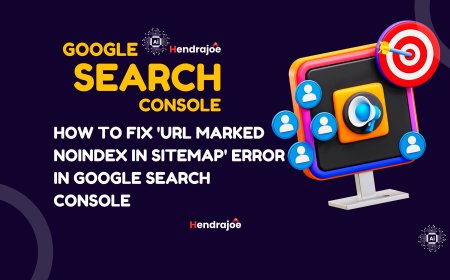Minimalist Home Design Ideas for 2025 With AI Collaboration
In recent years, minimalist home design has gained immense popularity, and as we move into 2025, the trend is evolving to embrace technology, sustainability, and modern aesthetics

In recent years, minimalist home design has gained immense popularity, and as we move into 2025, the trend is evolving to embrace technology, sustainability, and modern aesthetics. Minimalism is no longer just about decluttering spaces; it's about creating harmony between functionality, beauty, and efficiency. With advancements in artificial intelligence (AI), designing a dream home has become more innovative and accessible. Here, we explore some compelling minimalist design ideas and how you can use AI to bring these visions to life.
1. Embracing Futuristic Elegance: Simplifying Luxury
Minimalism doesn't mean sacrificing luxury. In fact, simplicity can amplify elegance, making spaces feel more open, airy, and serene. A futuristic minimalist home for 2025 combines clean lines, open layouts, and smart design elements:
- Materials: Use smooth concrete walls, reflective glass panels, and warm wood finishes to achieve a timeless look.
- Key Features: Cantilevered upper floors and large floor-to-ceiling glass windows provide an architectural edge while maintaining simplicity.
- Color Palette: Stick to neutral tones like whites, grays, and beiges, accented with natural textures.
Prompt for AI Collaboration:
"A hyper-realistic modern house with a futuristic design, featuring a cantilevered upper floor, smooth concrete walls, and reflective glass panels. The outdoor area includes a sleek infinity pool and lush landscaping illuminated by soft LED lights."




2. Nature-Integrated Minimalist Homes: Bringing the Outdoors In
In 2025, sustainable living and nature-inspired designs are at the forefront of architecture. Minimalist homes are incorporating elements that blur the line between indoor and outdoor spaces:
- Key Elements: Glass walls and sliding doors that open to lush gardens or courtyards, creating a seamless flow between nature and living spaces.
- Eco-Friendly Materials: Use reclaimed wood, bamboo, and stone to add warmth and a sense of earthiness to your design.
- Outdoor Features: Infinity pools surrounded by greenery or rooftop gardens are ideal for small spaces while adding a touch of luxury.
Prompt for AI Collaboration:
"A luxurious, nature-integrated house for 2025. The design includes floor-to-ceiling glass walls, a rooftop garden, and an infinity pool that flows into a natural pond. Wood and stone accents blend seamlessly with the surrounding environment."




3. Coastal Minimalism: Relaxation Redefined
Living by the coast or simply dreaming of it? Coastal minimalism embraces the beauty of ocean-inspired living. It’s not just about location—it’s about creating a relaxing and breezy atmosphere that reflects the simplicity of seaside life:
- Design Focus: Wide-open spaces, wrap-around balconies, and materials that reflect coastal vibes, such as light woods and natural fibers.
- Color Scheme: Whites and blues dominate, with occasional sandy beige tones to mimic the beach.
- Views and Ventilation: Large windows and open layouts to maximize natural light and ocean views, creating an airy, tranquil feel.
Prompt for AI Collaboration:
"A stunning coastal house with panoramic ocean views, a wrap-around balcony, and a cantilevered second floor. The exterior combines glass and steel, while the interior features an open-plan living area with direct access to a private beach."




Why Collaborate with AI for Home Design?
Artificial Intelligence is revolutionizing the way we approach architecture and interior design. By collaborating with AI tools, homeowners and designers can visualize ideas, optimize layouts, and personalize features based on preferences and budget.
Key Benefits:
- Visualization Made Easy: AI tools like DALL-E can generate hyper-realistic renderings of your ideas, helping you see your dream home before construction begins.
- Cost-Effective Planning: With AI, you can explore multiple designs without hiring expensive architects for preliminary sketches.
- Sustainability: AI can suggest energy-efficient materials, smart layouts, and sustainable solutions, aligning with eco-friendly goals.
How to Incorporate Minimalism Into Your Home Design
- Focus on Functionality: Minimalist homes prioritize functionality over excess. Ensure every space has a purpose and avoid unnecessary clutter.
- Declutter and Simplify: Adopt the "less is more" philosophy. Choose quality over quantity when it comes to furniture and decor.
- Smart Storage Solutions: Invest in hidden storage spaces to keep things organized while maintaining a clean aesthetic.
- Neutral Colors with Texture: Use neutral color palettes but add depth with textures like wood, stone, or fabrics.
- Smart Home Features: Integrate smart lighting, automated blinds, and energy-efficient appliances to enhance both convenience and sustainability.
Looking Ahead: The Future of Minimalism
As technology advances and sustainability becomes more critical, the future of minimalist design is set to evolve. Here are some trends we expect to dominate in the coming years:
- AI-Driven Customization: Homes tailored to individual lifestyles and preferences, down to the smallest detail.
- Net-Zero Homes: Minimalist homes designed to generate as much energy as they consume.
- Biophilic Design: An increased focus on incorporating nature into homes through green walls, water features, and indoor plants.
Conclusion: Simplicity Meets Innovation
Minimalist home design in 2025 is about more than just aesthetics—it’s a lifestyle choice that combines simplicity, functionality, and sustainability. By leveraging AI tools and embracing innovative design concepts, you can create a space that reflects your personality while staying ahead of architectural trends.
Use the prompts provided in this article to visualize your dream home and see how minimalism can transform your living experience. With collaboration between creativity and AI, the possibilities are limitless.
What's Your Reaction?






































